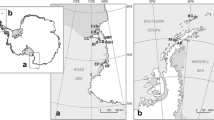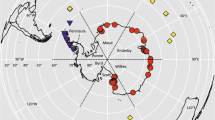Abstract
Coloniality in the phylum Rotifera is defined and reviewed. Only two families of rotifers contain truly colonial forms: Flosculariidae and Conochilidae (order Gnesiotrocha, suborder Flosculariacea). Most species form intraspecific colonies ranging in size from a few to about 200 individuals, but species that produce enormous colonies (> 1000 individuals) are also known. All seven genera of the Flosculariidae contain species that form colonies to widely varying degrees (Beauchampia, Floscularia, Lacinularia, Limnias, Octotrocha, Ptygura, Sinantherina). All four species of the monogenetic Conochilidae (Conochilus) are colonial, but two species form colonies of only an adult and a few young. At least one other family (Philodinidae; Bdelloida) contains a species that exhibits a form of coloniality (Philodina megalotrocha). Two hypotheses that attempt to explain the adaptive significance of coloniality (Energetic Advantage and Predatory Avoidance) are reviewed and new information concerning the former is presented. Evolution of coloniality is discussed briefly.
Similar content being viewed by others
References
Alcaraz, M., G.-A. Paffenhöfer & J. R. Strickler, 1980. Catching the algae: a first account of visual observations on filterfeeding calanoids. In W. C. Kerfoot (ed.), Evolution and Ecology of Zooplankton Communities. The University Press of New England, Hanover (N.H.); Lond.: 241–248.
Anderson, H. H. & J. Shephard, 1892. Notes on Victorian Rotifers. Proc. r. Soc. Victoria, Melbourne n. ser. 4: 69–80.
Banta, W. C., F. K. McKinney & R. L. Zimmer, 1974. Bryozoan monticules: excurrent water outlets? Science 185: 783–784.
Beavers, R. A. & R. H. Stavin, 1975. Seasonal changes in diaptomid copepod populations as a function of vertebrate predation. Verh. int. Ver. Limnol. 19: 2966–2975.
Bhardwaj, S. C., 1985. Studies on the morphology of five species of colonial rotifers. Uttar Pradesh J. Zool. 5: 6–13.
Bhardway, S. C. & A. K. Dattagupta, 1984. Life cycle and colony formation in a few species of rotifers of the order Flosculariacea. In A. K. Dattagupta & R. P. Maleyvar (eds.), Environment and Biotic-interaction. Proc. IV All India Symp. Envir. Biol.: 74–80.
Bishop, J. W. & L. M. Bahr, 1973. Effects of colony size on feeding by Lophopodella carteri (Hyatt). In R. S. Broadman, A. H. Cheetham & W. A. Oliver (eds.), Dowden, Huctinson, and Ross, Inc. Strondsburg, PA. 603 pp.
Bogolovsky, A. S., 1958. New data on the reproduction of heterogenous rotifers. Observations on the reproduction of Sinantherina socialis (Lin.). Zooh. Zh. 37: 1616–1623 (in Russian).
Brown, J. L. & G. H. Orians, 1970. Spacing patterns in mobile animals. Ann. Rev. Ecol. Syst. 1: 239–262.
Burckhardt, G., 1944. Hydrobiologische Studien an Schweizer Alpenseen. Zeit. Hydrol. 10: 354–384.
Burwitz, P., 1977. Eine sonderbare ‘Koloniebildung’ des Räder-tieres Philodina megalotrocha. Mikrokosmos 66: 293–294.
Buskirk, R. E., 1975. Coloniality, activity patterns and feeding in a tropical orb-weaving spider. Ecology 56: 1314–1328.
Buss, L. W., 1981. Group living, competition, and the evolution of cooperation in a sessile invertebrate. Science 213: 1012–1014.
Calow, P., 1981. Invertebrate Biology. Halsted Press, NY., 183 pp.
Canella, M. F., 1952. Osservazioni su Sinantherina semibullata (Thorpe) e su altri Flosculariacea. Ann. d'Univ. Ferrera (N.S.), Sez III, 1: 171–257.
Champ, P., 1978. Dynamique d'une population d'un Rotifère epiphyte thermophile (Sinantherina socialis) en présence de pollution thermique. Arch. Hydrobiol. 83: 213–231.
Champ, P. & R. Pourriot, 1977a. Reproductive cycle in Sinantherina socialis. Arch. Hydrobiol. Beih. 8: 184–186.
Champ, P. & R. Pourriot, 1977b. Particularités biologiques et écologiques du Rotifère Sinantherina socialis (Linne). Hydrobiologia 55: 55–64.
Davies, N. B. & J. R. Krebs, 1978. Introduction: ecology, natural selection and social behaviour. In J. R. Krebs & N. B. Davies (eds.), Behavioural ecology an evolutionary approach. Blackwell Scientific Publications, Oxford: 1–18.
Dodson, S. I., 1974. Adaptive change in plankton morphology in response to size-selective predation: a new hypothesis of cyclomorphosis. Limnol. Oceanogr. 19: 721–729.
Edmondson, W. T., 1940. The sessile Rotatoria of Wisconsin. Trans. am. Microsc. Soc. 59: 433–459.
Edmondson, W. T., 1945. Ecological studies of sessile Rotatoria, 2. Dynamics of populations and social structure. Ecol. Monogr. 15: 141–172.
Edmondson, W. T., 1949. A formula key to the Rotatorian genus Ptygura. Trans. am. Microsc. Soc. 68: 127–135.
Edmondson, W. T., 1959. Rotifera. In W. T. Edmondson (ed.), Fresh-water Biology, 2nd edition, John Wiley & Sons, Inc., NY.: 420–494.
Edmondson, W. T. & A. H. Litt, 1986. Conochilus in Lake Washington. Hydrobiologia (this volume).
Epp, R. W. & W. M. Lewis, Jr., 1979. Sexual dimorphism in Brachionus plicatilis (Rotifera): evolutionary and adaptive significance. Evolution 33: 919–928.
Fairchild, G. W., 1981. Movement and microdistribution of Sida crystallina and other littoral microcrustaceans. Ecology 62: 1341–1352.
Gilbert, J. J., 1963. Mictic female production in the rotifer Brachionus calyciflorus. J. exp. Zool. 153: 113–123.
Gilbert, J. J., 1980. Observations on the susceptibility of some protists and rotifers to predation by Asplanchna girodi. Hydrobiologia 73: 87–91.
Gunter, D. D. & L. A. Knight, Jr., 1978. Observations of the rotifer Sinantherina semibullata (Thorpe) from Ross Barnett reservoir, Mississippi. Egypt. J. Microbiol. 13: 99–106.
Hudson, C. T. & P. H. Gosse, 1886. The Rotifera; or wheel-animalcules. Vol I, Longmans, Green and Co., London, 128 pp.
Hudson, C. T. & P. H. Gosse, 1889. The Rotifera; or wheel-animalcules, both British and foreign. Supplement, Longmans, Green and Co., London, 64 pp.
Huxley, T. H., 1853. Lacinularia socialis. A contribution to the anatomy and physiology. Trans. Micr. Soc., London, n. ser. 1: 1–19.
Kerfoot, W. C., 1977. Implications of copepod predation. Limnol. Oceanogr. 22: 316–325.
Kerfoot, W. C., 1978. Combat between predatory copepods and their prey: Cyclops, Epischura, and Bosmina. Limnol. Oceanogr. 23: 1089–1102.
Kerfoot, W. C., D. L. Kellogg, Jr. & J. R. Strickler, 1980. Visual observation of live zooplankters: evasion, escape, and chemical defenses. In W. C. Kerfoot (ed.), Evolution and Ecology of Zooplankton Communities. The University Press of New England, Hanover (N.H.); Lond.: 10–27.
Kolisko, A., 1939. Über Conochilus unicornis und seine Koloniebildung. Int. Revue ges. Hydrobiol. Hydrogr. 39: 78–98.
Koste, W., 1970. Über die Sessilen Rotatorien einer Moorblänke in Nordwestdeutschland. Arch. Hydrobiol. 68: 96–125.
Koste, W., 1978. Rotatoria. Die Rädertiere Mitteleuropas. Gebrüder Borntraeger, Berlin-Stuttgart, 2 vols., 673 pp., 234 plates.
Kutikova, L. A., 1983. Parallelism in the evolution of rotifers. Hydrobiologia 104: 3–7.
Mackie, G. O., 1963. Siphonophores, bud colonies and superorganisms. In E. C. Dougherty (ed.), The Lower Metazoa Comparative Biology and Phylogeny, Univ. Calif. Press, Berkeley: 329–337.
Michael, R. G., 1966. A new rotifer, Conochilus madurai sp. nov. from an astatic pool in Madurai, South India. Zool. Anz. 177: 439–441.
Pourriot, R., G. Rouyer & M. Peltier, 1972. Prolifération de rotifères epiphytes et pollution thermique dans la Loire. Bull. fr. Piscic. 224: 111–118.
Rosen, B. R., 1979. Modules, members and communities: a postscript introduction to social organisms. In G. Larwood & B. R. Rosen (eds.), Biology and Systematics of colonial Organisms. Academic Press, NY.: xiii-xxxv.
Rousselet, C. F., 1892. On Conochilus unicornis and Euchlanis parva — two new rotifers. J. Quekett Micr. Club, ser. 2, 4: 367–370.
Rousselet, C. F., 1900. Note on the genus Lacinularia. J. Quekett Micr. Club, ser. 2, 7: 313–314.
Ruttner-Kolisko, A., 1974. Planktonic Rotifers; Biology and Taxonomy. Binnengewässer Suppl. 26, 146 pp.
Shephard, J., 1896. A new rotifer — Lacinularia elongata. Vict. Nat. 13: 22–24.
Shephard, J., 1897. A new rotifer — Lacinularia elliptica. Vict. Nat. 14: 84–86.
Shephard, J., 1899. A new rotifer — Lacinularia striolata, with note on L. pedunculata. Proc. Roy. Soc. Vist. 12: 20–35.
Sokal, R. R. & F. J. Rohlf, 1981. Biometry. 2nd edition, W. H. Freeman and Company, NY., 859 pp.
Stemberger, R. S. & M. S. Evans, 1984. Rotifer seasonal succession and copepod predation in Lake Michigan. J. Great Lakes Res. 10: 417–428.
Strickler, J. R., 1977. Observation of swimming performances of planktonic copepods. Limnol. Oceanogr. 22: 165–170.
Surface, E M., 1906. The formation of new colonies of the rotifer, Megalotrocha alboflavicans Ehr. Biol. Bull. 11: 182–192.
Thorpe,V. G.,1889. Description of new species of Megalotrocha. J. r. microsc. Soc. 1889: 613–616.
Thorpe, V. G., 1893. The Rotifera of China. J. r. microsc. Soc. 1893: 145–152.
Tiefenbacher, L., 1972. Beiträge zur Biologie und Ökologie sessiler Rotatorien unter besonderer Berücksichtigung des Gehäusebaues und der Regeneration-fähigkeit. Arch. Hydrobiol. 71: 31–78.
Vasisht, H. S. & B. L. Dawar, 1970. The Anatomy and Histology of the rotifer Lacinularia flosculosa Müller. Res. Bull. Panjab Univ. 21: 361–377.
Vidrine, M. F., R. E. McLaughlin & O. R. Willis, 1985. Free-swimming colonial rotifers (Monogononta: Flosculariacea: Flosculariidae) in southwestern Louisianna rice fields. Freshwat. Invertebr. Biol. 4: 187–193.
Wallace, R. L., 1977a. Distribution of sessile rotifers in an acid bog pond. Arch. Hydrobiol. 79: 478–505.
Wallace, R. L., 1977b. Adaptive advantages of substrate selection by sessile rotifers. Arch. Hydrobiol. Beih. 8: 53–55.
Wallace, R. L., 1978. Substrate selection by larvae of the sessile rotifer Ptygura beauchampi. Ecology 59: 221–227.
Wallace, R. L., 1980. Ecology of sessile rotifers. Hydrobiologia 73: 181–193.
Wallace, R. L. & W. T. Edmondson, 1986. Mechanism and adaptive significance of substrate selection by a sessile rotifer. Ecology 67: 314–323.
Wallace, R. L. & P. L. Starkweather, 1983. Clearance rates of sessile rotifers: In situ determinations. Hydrobiologia 104: 379–383.
Wallace, R. L. & P. L. Starkweather, 1985. Clearance rates of sessile rotifers: In vitro determinations. Hydrobiologia 121: 139–144.
Wesenberg-Lund, C., 1930. Contributions to the biology of the Rotifera. II: Periodicity and sexual periods. K. danske Vidensk. Selsk. Skr. 9: 1–230.
Western, G., 1891. Notes on rotifers: a free-swimming variety of Lacinularia and a new rotifer found at Guildford. J. Quekett Micro. Cl. ser. 2, 4: 254–258.
Williamson, C. E., 1983. Invertebrate predation on planktonic rotifers. Hydrobiologia 104: 385–396.
Wulfert, K., 1939. Beiträge zur kenntnis der Rädertierfauna Deutschlands. Teil IV. Die Rädertiere der Saale-Elster-Niederung bei Merseburg in ökologisch-faunistischer Beziehung. Arch. Hydrobiol. 35: 563–624.
Author information
Authors and Affiliations
Rights and permissions
About this article
Cite this article
Wallace, R.L. Coloniality in the phylum Rotifera. Hydrobiologia 147, 141–155 (1987). https://doi.org/10.1007/BF00025737
Issue Date:
DOI: https://doi.org/10.1007/BF00025737




